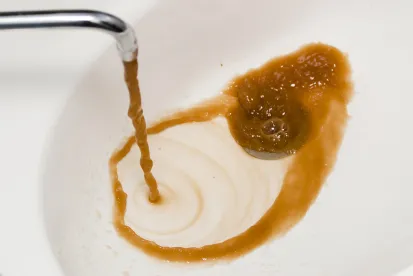On October 21, 2021, a U.S. District Court vacated the Trump Administration’s rule that sought to limit the power of States and Indian Tribes under Section 401 of the Clean Water Act to impose conditions on federal permits for projects that would create discharges into the waters of a State or Tribe. The ruling effectively restores EPA’s prior rule, initially adopted in 1971, pending further revisions by the Biden Administration, which are currently being considered and are likely to be adopted in roughly two years.
Key Takeaways
-
The District Court’s decision vacates the Trump Administration rule, adopted in June 2020, that significantly restricted the scope of the conditions states are permitted to impose on federal permits under Section 401 of the Clean Water Act.
-
States will now have considerably more leeway than was allowed under the Trump Administration rule to impose conditions on federal permits for projects that involve discharges to the waters of an affected State. Given the Biden Administration’s priorities in environmental policy, that will likely remain in effect even after it issues a new rule governing Section 401 implementation.
-
On June 2, 2021, the Biden Administration issued a Notice of Intent indicating that it would undertake an administrative process to revise the Trump Administration’s Section 401 rule, with a final rule likely to be issued in 2023. The District Court’s ruling means that, until that final rule is issued, the 1971 rule, which accorded broad discretion to the states, will remain in effect.
-
At least for the time being, difficult interpretative questions about how the one-year time limit allowed to states to act under Section 401 is construed, and especially how or whether the time limit can be extended, will remain.
Background
Section 401 of the Clean Water Act authorizes States and Tribes to certify that a discharge into waters of the United States that may result from a proposed activity will comply with certain sections of the CWA, including effluent limitations and performance standards, water quality standards, and toxic pretreatment effluent standards. The CWA has statutory timelines for action, requiring States and Tribes to act on a certification request within a reasonable time not to exceed one year. Certification requires the State or Tribe to take one of three actions: (1) grant certification; (2) deny certification; or (3) grant certification with conditions. Failure to act timely by the State or Tribe can result in a waiver of certification. Where a State or Tribe denies certification, the permit or license may not be issued. The federal government must include in federal permits the conditions the State or Tribe prescribe in a Section 401 certification.
The certification process applies most prominently to wetlands permits under Section 404 of the CWA, which are issued by the Army Corps of Engineers, and to Federal Energy Regulatory Commission (FERC) licenses for pipeline and hydropower facilities. It will also apply to EPA in the handful of states where it has authority to issue National Pollutant Discharge Permits under Section 402 of the CWA.
In 1971, before the major amendments that became the Clean Water Act of 1972 were passed, EPA issued regulations governing implementation of Section 401. Nearly fifty years later, on April 10, 2019, President Trump issued Executive Order No. 13,868, which directed federal agencies to streamline regulations and reduce regulatory barriers in order to encourage the development of energy infrastructure. Based on this direction, and the perception that states were at times overstepping their authority under Section 401, the Trump Administration adopted new regulations governing implementation of Section 401, which went into effect in June 2020. The regulations were immediately challenged by a number of states and environmental groups and three of these challenges were eventually consolidated in the U.S. District Court for the Northern District of California.
As the litigation was getting underway, President Biden was elected. Within hours after being inaugurated, the new Administration listed a number of Trump Administration rules it would review and target for revision, including the recently-adopted Section 401 rule. Accordingly, the Justice Department asked for a voluntary remand of the Trump Administration rule but did not ask for the rule to be vacated in the interim before it adopts a new rule. A number of states and environmental groups objected to the rule remaining in place and instead argued that the rule should be vacated.
The District Court, in an opinion by Senior District Judge William Alsup, agreed, vacating the rule and remanding it to EPA for further action. The opinion’s primary justification is that EPA likely abused its discretion in adopting the rule. The court found the Trump rule contrary to the U.S. Supreme Court’s decision in Public Utility District No. 1 of Jefferson County, Washington v. Washington Dep’t of Ecology, 511 U.S. 700 (1994), which construed the power of the states under Section 401 to permit a broad array of state conditions on any federally-issued permit subject to Section 401. EPA asserted that Jefferson PUD interpreted an ambiguous statute and therefore did not foreclose its exercise of discretion, but Judge Alsup rejected this argument, concluding that EPA’s position could not be squared with the Supreme Court’s conclusion.
Judge Alsop was also persuaded that letting the Trump rule remain in place would likely cause harm to the environment during the roughly two years remaining before the Biden Administration completes the process for adopting a new rule. Notably, he was particularly persuaded by arguments raised by the State of Washington, which asserted that it is currently considering what conditions it should impose on three major Skagit River dams undergoing FERC relicensing. Washington asserted that the Trump rule would constrain its ability to impose important conditions on those dams, including, for example, thermal limits. Further, because it faces a one-year deadline for action under Section 401, its ability to act will have passed by the time the new rule is adopted. This would lock in environmental problems for the entire 50-year term of the new FERC licenses.
Conclusion
The District Court’s decision, unless successfully appealed or unless another District Court reaches a different conclusion, consigns the Trump Administration’s rule to the dustbin of history. Groups interested in the Section 401 issue will therefore need to focus their attention on the new Biden Administration rulemaking. EPA’s Notice of Intent for the new rule promises that the agency will not simply resurrect the 1971 rule but will “revise the rule in a manner that promotes efficiency and certainty in the certification process, that is well-informed by stakeholder input on the 401 Certification Rule's substantive and procedural components, and that is consistent with the cooperative federalism principles central to CWA Section 401.”





 />i
/>i

